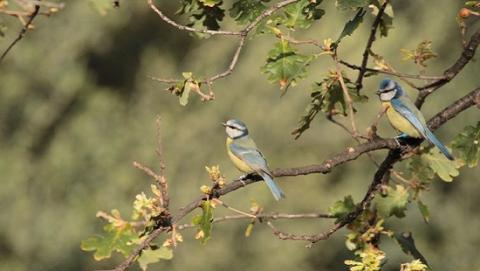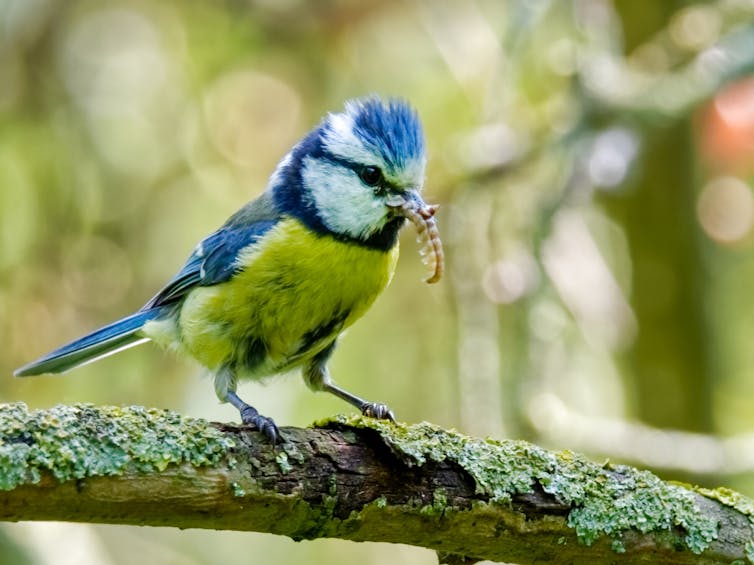
Understanding the Mechanisms for Adapting to Climate Change
Increasing urbanization, intensive agriculture, overexploitation of resources, introduction of exotic species and climate change: all these environmental changes form an explosive cocktail for biodiversity.
In the face of these transformations, questions are frequently asked: will wild species be able to adapt to such rapid and far-reaching changes? Will the observed adaptations make it possible to preserve part of the world's biodiversity?
Over the last few decades, our vision of the processes by which living organisms adapt to their environment has changed drastically.
It was long thought that species evolved over very long time scales, but scientists have since realized that this evolution can be very rapid. For example, we have witnessed the rapid development of antibiotic resistance in pathogenic bacteria in humans, and the evolution of the color in a common butterfly following the blackening of tree bark due to heavy air pollution in England in the 19th century.

Evolution and plasticity
Living organisms adapt to changes in their living environment (such as reduced rainfall or the presence of a new predator) via two major processes: genetic evolution and/or phenotypic plasticity.
Adaptation through genetic evolution is achieved by modifying, between generations, the genetic composition of the population via natural selection. For example, mosquitoes carrying a new mutation that appeared in the 1980s have a much better survival rate against insecticides than other individuals not carrying this genetic innovation. As a result, this mutation and the insecticide resistance it provides spread through natural mosquito populations in about two decades.
This process of adaptation through changes in genetic composition requires that the selected traits (e.g., resistance) are at least partially transmissible between generations, from parent to child. It is important to note that since genetic changes take place between generations, genetic evolution is all the more rapid the shorter the generation time of the species: thus, the mosquito can adapt to a new environment more rapidly than the whale.
A second adaptation mechanism is "phenotypic plasticity".
While genetic evolution is a process that induces changes between generations in a given population, phenotypic plasticity is an adaptation process that can induce changes within each individual in the population.
For example, in many mammals, the amount of adipose tissue in an individual can vary according to several environmental parameters, such as cold weather. Similarly, many species increase their alertness time when the risk of predation is high.
Plasticity is therefore expressed within a generation, making it possible to adapt more rapidly than through genetic evolution. In particular, it allows the organism to readjust in response to changing environmental conditions over the course of an individual's life.
Often, organisms need time to be ready for new environmental conditions; if the plastic response is the development of a defense against predators, this must be put in place well before the encounter with the predator. Organisms therefore use clues present in the environment to develop the right response at the right time. This is the case for tadpoles who develop different morphologies depending on the presence or absence of predator odor.
In the current context, the existence of a mechanism such as phenotypic plasticity, which is widespread and can allow very rapid adaptation to environmental changes, is of major interest for understanding and anticipating the consequences of anthropogenic upheavals of biodiversity.
Laying eggs at the right time
The blue chickadee (Cyanistes caeruleus), a small passerine bird, is widely studied in ecology, and is the subject of numerous research studies based on observations in natural populations.
Work on this species has contributed to a better understanding of the importance of phenotypic plasticity for the adaptation of organisms to climate change.
Studies in the natural environment, where some of the oldest monitoring was set up several decades ago, have enabled us to better understand the ecology of the blue chickadee. In this species, as in most other insectivorous passerines living in temperate forests, chicks are mainly fed by both parents - about 1800 caterpillars to feed a single chick from hatching to fledging.

Thus, the synchronization between the chicks' feeding needs and the period of caterpillar abundance has a major impact on the chicks' survival. In order for the chicks to be born at the right time, i.e. when the parents can find a large quantity of caterpillars to bring back to the nest, the female chickadee must lay eggs about 30 days before the peak of caterpillar abundance in the forest.
But how do they lay their eggs at the right time?
The timing, as with many birds, depends partly on the environment and in particular on temperature: in warm years, chickadees lay their eggs earlier than in cold years, perfectly illustrating the concept of phenotypic plasticity.
The period during which chickadees are most sensitive to temperature, i.e. the period when birds pick up the clues of a more or less warm and early spring, can vary between one and three months before breeding. Depending on the population, this period of temperature sensitivity begins in spring or late winter. The reliability of temperature as a predictor of the period of food abundance (caterpillars) is crucial for reproductive success.
Plasticity in response to temperature is common. Thus, in the face of global warming, many species, both animal and plant, reproduce earlier and earlier over the years, just as trees bud earlier. These changes in the rhythm of life, linked to the response of organisms to changes in temperature, are already observable in our gardens and forests.
Plasticity therefore largely explains what we call increasingly early springs. Indeed, plasticity relative to phenology - i.e. the calendar of events during the year, such as the laying date of chickadees - is one of the main responses of wild species to climate change.
However, little is known about how global changes may affect this response and test the limits of adaptation. Is it possible for species to adapt quickly to these new and stressful environments? A recent study suggests that the plasticity of phenology may already be insufficient to allow populations to persist.
New and stressful disruptions
On the issue of animal adaptation to climate change, many scientific questions remain open.
What happens when environments become too different from those historically experienced by organisms? In particular, how does adaptation to progressive climate change enable these organisms to cope with extreme climatic events such as heat waves? How will differences in responses between species affect their interactions (e.g. between prey and predators or between cooperating species)?
Caterpillars develop earlier and earlier in response to climate change, but is there a limit for chickadees, a date before which it is physiologically impossible to start reproducing, preventing synchronization with their prey? How do global changes affect the reliability of information needed by organisms to respond to the environment?
For example, when hatching, young sea turtles often head for cities rather than the sea, as urban light is stronger than the Moon. Can this type of misinterpretation limit or even cancel out the benefits of plasticity?
Finally, will organisms be able to cope with multiple environmental changes thanks to phenotypic plasticity? In addition to climate change (changes in temperature, humidity, humidity, etc.), there is also the question of how the plasticity of the Moon will be used in the future.
Our research project "Mommy knows best" is designed to evaluate whether the limits of plasticity are already detectable in natural populations, using the blue chickadee as a study model. The goal is to test the effect of various environmental factors on the plasticity of the laying date in chickadees (such as the effect of urbanization or agricultural practices, for example). The project will also model the effects of plasticity on the dynamics of chickadee populations, in order to understand to what extent changes in plasticity can affect the risk of extinction.
The project's findings may also provide conceptual insights into the process of phenotypic plasticity in the context of climate change, and be applied to other wildlife species.
Understanding the limits of adaptation in the face of global changes will enable a better understanding of the magnitude of the challenge facing biodiversity today...but there is no need to wait to fight against existing issues!

The research project "Mommy knows best", which includes this publication, was supported by the BNP Paribas Foundation as part of the Climate and Biodiversity Initiative program.
Céline Teplitsky, Researcher in evolutionary ecology, CNRS, University of Montpellier; Anne Charmantier, Director of research in evolutionary ecology, Centre national de la recherche scientifique (CNRS) and Suzanne Bonamour, Post-doctoral researcher, National Museum of Natural History, Sorbonne University.
This article has been republished and translated from 'The Conversation' under a Creative Commons license. Read the original article.
